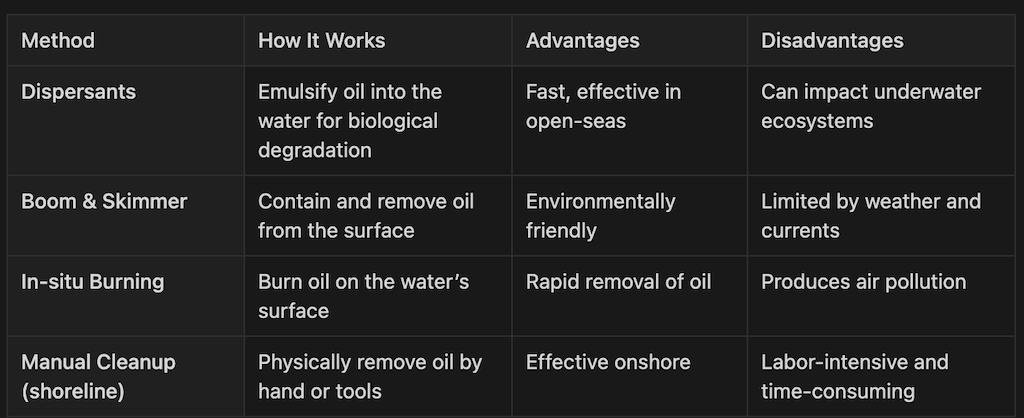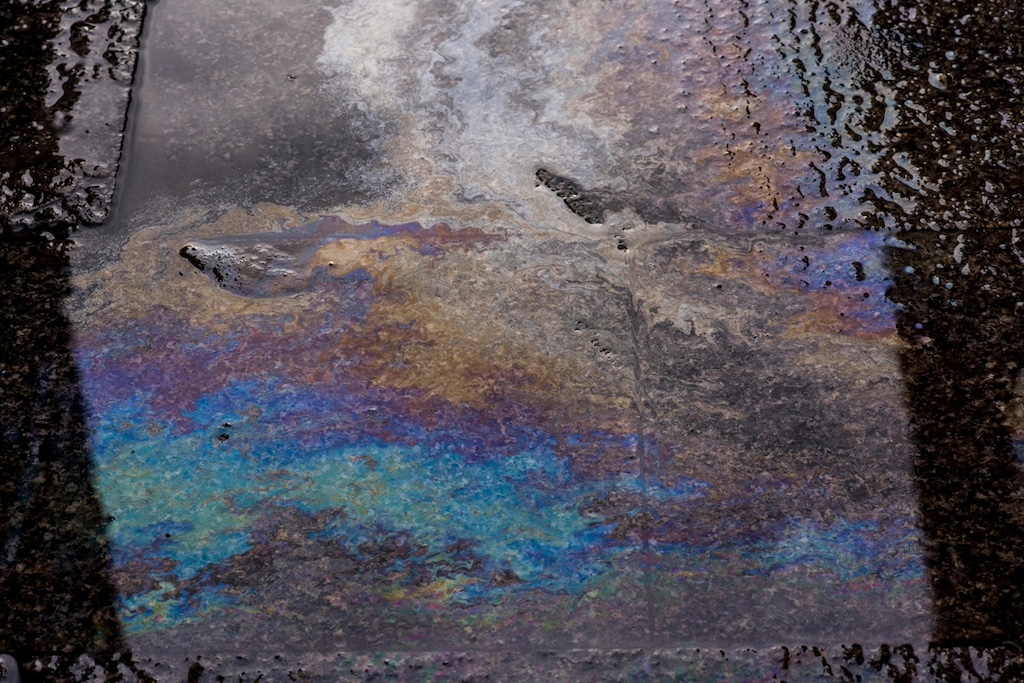An oil spill is one of the most environmentally damaging forms of pollution. One commonly used method to tackle oil spills is the application of oil spill dispersants.
An oil spill dispersant uses chemical substances to accelerate the breakdown of oil in the ocean. Dispersants break up oil slicks into tiny droplets that disperse through the water and allow microorganisms to degrade them more easily.
Dispersants typically consist of two main components:
- Surfactants (surface-active agents): These reduce the surface tension between oil and water, allowing the oil to mix with water in the form of tiny droplets.
- Solvents: These dissolve the surfactants and ensure an even distribution over the oil slick.
Functions and Benefits of Oil Spill Dispersants
Using dispersants in oil spill response has various functions and advantages, including:
- Accelerating Biodegradation: Smaller oil droplets have a larger surface area, making them easier for microorganisms to break down.
- Reducing Surface Impact: Dispersants help remove oil from the ocean surface, which can otherwise damage coastlines, mangrove forests, and surface-dwelling marine life.
- Lowering Fire Risk: Removing oil from the water’s surface also reduces the risk of forming flammable oil layers.
- Aiding Offshore Response: Dispersants are particularly useful in open-sea areas where physical methods like skimmers or booms are difficult to deploy.
How Oil Spill Dispersants Work
Dispersants operate through both physical and chemical processes. Here’s a simplified explanation:
- Application: Crews spray dispersants onto the oil slick using aircraft or vessels.
- Penetration & Surfactant Action: Surfactants penetrate the oil layer and reduce the interfacial tension between oil and water.
- Formation of Micro Oil Droplets: The oil breaks into tiny droplets, which then disperse throughout the water column.
- Natural Biodegradation: Marine microorganisms begin breaking down the diluted oil.
Differences Between Dispersants and Other Oil Spill Response Methods


Environmental Impact & Usage Regulations
1. Environmental Impact. While dispersants help speed up oil degradation, their use is not without risks. Potential impacts include:
- Oil and dispersant mixtures can be more toxic to some marine organisms than crude oil alone.
- Sunken oil can reach the seabed and harm fish, corals, and benthic organisms.
- Ongoing studies aim to understand the long-term environmental impacts of residual dispersants in marine environments.
2. Usage Regulations. Dispersant use is strictly regulated by environmental authorities. In Indonesia, its use is overseen by the Ministry of Environment and Forestry (KLHK) and SKK Migas. Dispersants are typically only allowed when:
- A rapid environmental impact assessment (Environmental Trade-Off Analysis) has been conducted
- The area is offshore, far from conservation zones or key fishing grounds
- The dispersant type is officially registered and certified
Other countries, like the United States, follow frameworks such as the National Contingency Plan (NCP) and maintain a list of approved dispersants by the Environmental Protection Agency (EPA).
Oil spill dispersants are a key solution in marine oil spill response. By breaking oil into smaller droplets and accelerating natural degradation, dispersants help reduce the visible and surface impact of oil spills. However, their use must be carried out with caution and guided by ecological considerations and regulations, given their potential effects on marine life.
Check out more Hasgara products: Oil Spill Dispersant

